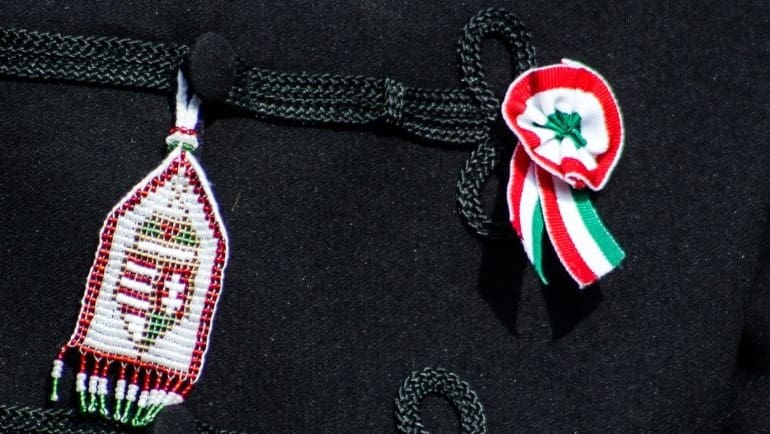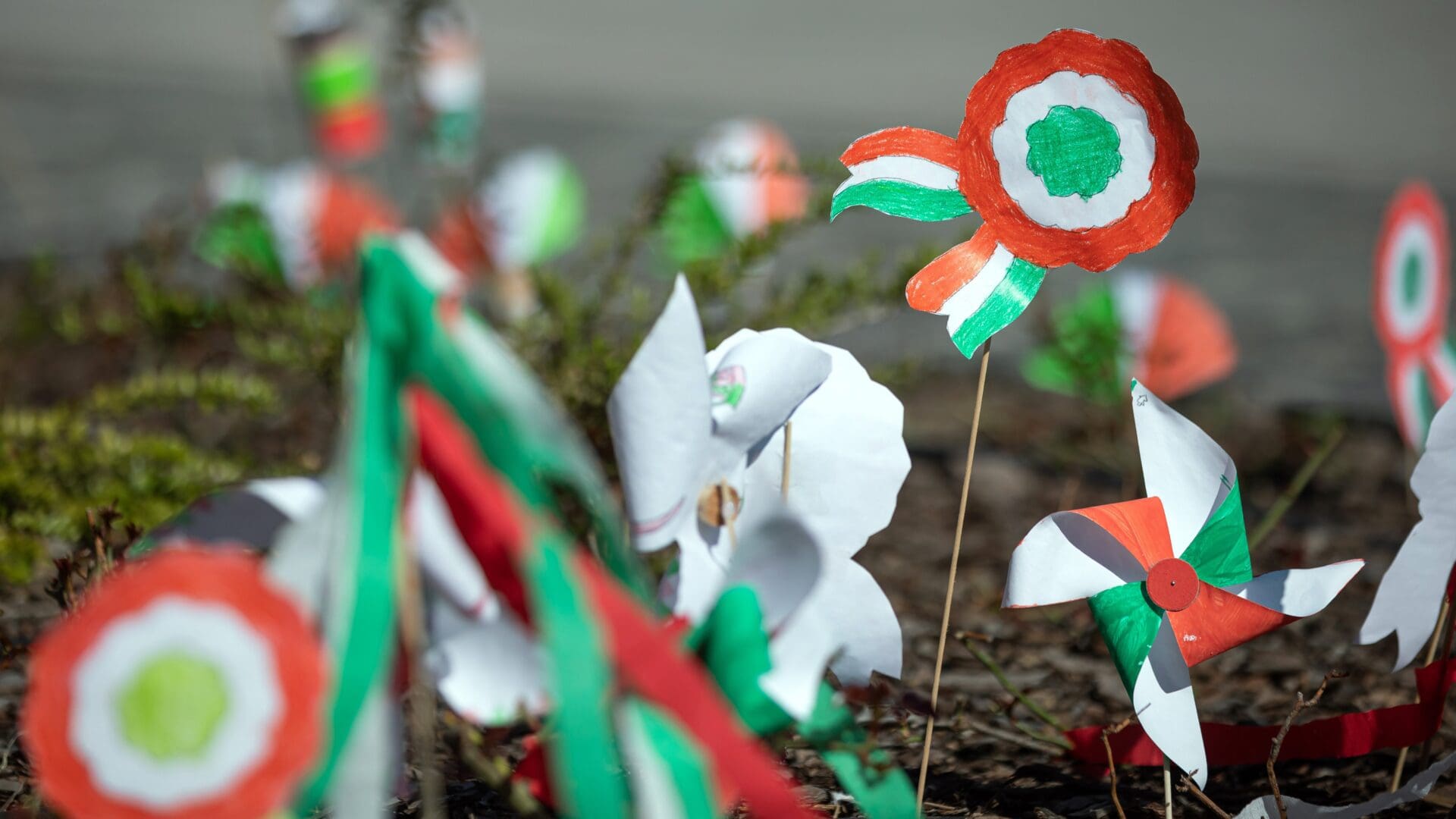The cockade is one of the best-known and most significant Hungarian symbols, which has played a decisive role in our history. Over the centuries, the cockade has become an emblem of patriotism and Hungarian identity, which we have proudly worn on all our national holidays ever since. In this article, The Budapester summarizes the history of the Hungarian cockade and explains how to wear our red-and-white-and-green national symbol correctly.
Since When Do We Wear Cockades?
Originally associated with the French Revolution in the 18th century, the term cockade derives from the word ‘cocarde’, meaning ‘cockscomb’ in French, which referred to the shape of the cockade.
At the time, it was used mainly as a political and military symbol and was typically pinned on a hat or one side of a dress.
In Hungary, its use spread in the middle of the 19th century, during the Hungarian Revolution of 1848. The wearing of the cockade can also be linked to one of the most important figures of the revolution, poet Sándor Petőfi, as his wife, Júlia Szendrey, made a red-, white-, and green-coloured cockade for him.
However, the use of Hungarian national emblems, including the cockade, was banned after the imperial troops marched in, as it symbolized the Hungarian national movement and freedom fight. Nowadays, fortunately, there is no longer any prohibition against wearing it—we can proudly and boldly pin it on our chest, above our heart.

The Correct Way to Wear a Cockade
As the colours of the Hungarian and Italian flags are the same, only their order is different, the correct order of the colours of the cockade has been a matter of debate for decades. Although the ‘March Youth’, that is, the radical youth of Pest, led by Sándor Petőfi, wore the version red on the outside and green on the inside, the correctness of this has raised several questions. On the one hand, it may have been a deliberate way of showing their sympathy for the Italian Revolution. On the other hand, it cannot be ruled out that they simply wore it incorrectly.
Looking at it from a practical point of view, it is true that if we staple together a cockade from red-, white-, and green-coloured ribbons, the red one will be on the inside and the green on the outside. Furthermore, when interpreting the meaning of a cockade, its colours should be read from the inside out, so proceeding along this principle, again, the red should be on the inside and the green on the outside. However, to this rule, it should also be added that if the cockade has overhanging little ‘tails’, then the arrangement of red being on the outside and green on the inside is also correct.
After the colours were cleared up, all that remains is the correct placement of the cockade on our clothes. Most of us wear it on the left side, close to the heart, but there are exceptional cases when the cockade should be on the right side. One such exception is for military uniforms, as a cockade on the left side would impede movement when the weapon is extended.
Celebrating Our National Holiday — 15 March
Today, we are witnessing the 15 March celebrations, where we can once again wear our cockades as an important part of the commemoration. Although it only takes a few minutes to buy one and pin it up, it is still a powerful force of togetherness.
Whether we have a cockade with red on the outside and green on the inside or a reversed colour scheme, the most important thing is to wear it as a way of expressing our pride in being Hungarian!
Related articles:
Click here to read the original article.








